Types of Trees: [Characteristics and Names]
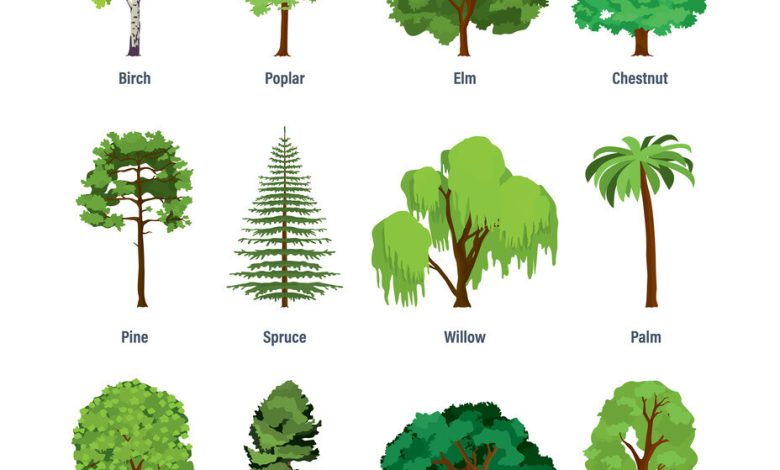
What will you learn in this article? All about the different types of trees found around the world in this comprehensive guide, which will give you a deeper insight and better appreciation of the different trees we can find. Can you come with us?
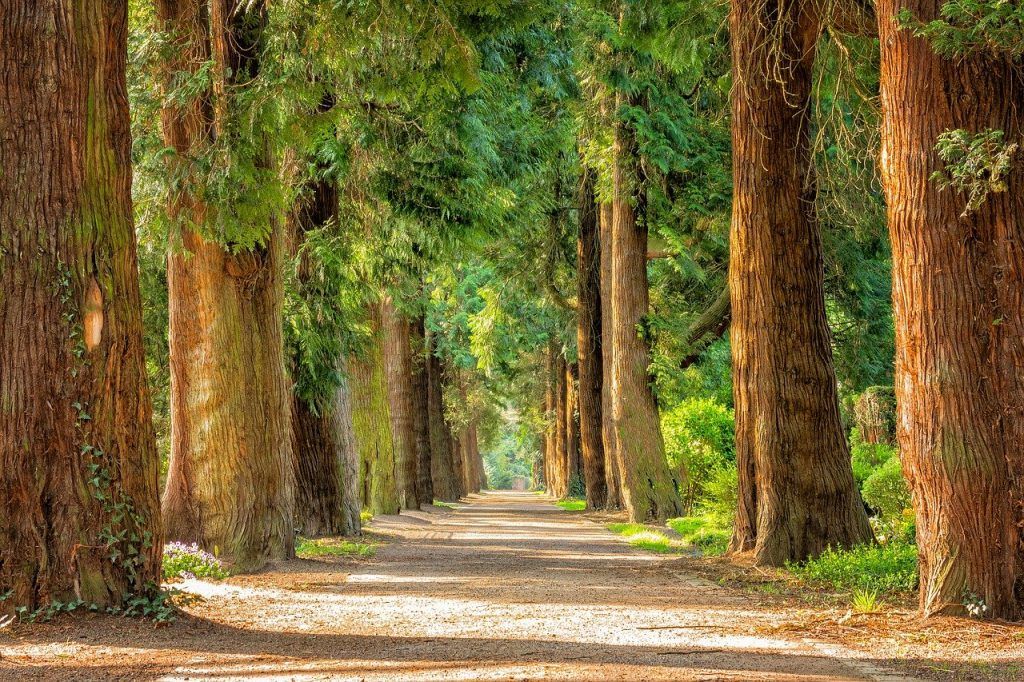
These giant plants have been our neighbors for as long as the human race has existed. They have a different life than ours, yet the elements that survive between us are surprisingly similar.
Trees live on a totally different time scale than we do. Ancient forests show us that trees can survive ten times longer than us. But if we cut to the chase, we discover that, just like us, trees communicate, eat, exist in families, learn, adapt, thrive, and perish.
It’s just that every minute for us extends to a year for them.
So, we have made this complete mega guide on the different types of trees that we can find. We have found it necessary to dive into a very small fraction of some amazing trees. Diverse, resistant and incredible.
the life of the trees
tree structure
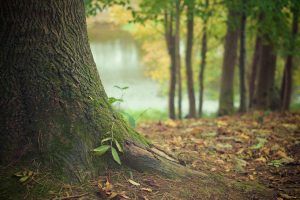
You have already seen a tree, but do you know why they are the way they are?
Let’s start with what happens under the ground.
Trees are able to stay upright thanks to their root system.
Depending on the variety of tree, the roots may grow very deep into the ground to provide the necessary support for the heavy trunk and branches above, or the roots grow shallow in the ground but spread widely (with orange trees). and lemon trees).
Root systems not only serve to provide support, but are how trees access water and nutrients from the soil. The roots absorb water from the soil by osmosis and then transport it throughout the body of the tree, up to the leaves in the sky.
A tree trunk is made up of woody tissue that gives it strength, stability, and flexibility, as well as vascular tissue that helps transport water and nutrients to all members of the tree.
Most trees are covered in a layer of bark that helps provide a protective shield for the vulnerable and valuable parts below.
As we ascend, we find ourselves in the canopy or top of the tree. This is where the branches extend from the trunk, and sometimes these branches divide into smaller shoots. Some tree species only have branches at the top of the trunk, while others have branches that grow the entire length of the trunk.
At the end of the branches and buds is where we find the leaves (commonly associated with deciduous trees) or the needles (commonly associated with conifers). The leaves are capable of capturing the sun’s energy and carry out photosynthesis to convert water into sugar (the tree’s food!).

function of trees
You can think of a forest of trees as the capillaries in your lungs.
Trees (and the vast majority of plants) are the reason humans and animals can breathe. They extract carbon dioxide from the air and convert it into oxygen. The fewer trees there are on the planet, the more carbon dioxide there is in the atmosphere. The deforestation of the planet is one of the main causes of climate change.
Trees also help hold the soil in place. Their deep, ancient root systems prevent the soil from eroding or shedding during heavy storms.
Trees provide shelter and nutrients for many animals and insects. They provide humans with food, land, shade, building materials, and much more.

The two main types of trees
To organize ourselves, we have divided trees into two main categories: deciduous trees and evergreen trees. There are also subcategories, such as conifers, which we have indicated below.
Trees of feeble leaves
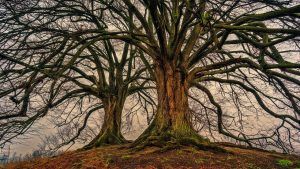
Deciduous trees are also called hardwood trees; this type of tree has leaves that change color and end up falling in autumn. The tree will be bare throughout the winter. When spring comes, new leaves will take their place.
Deciduous trees typically have large, broad leaves.
Deciduous trees do this, so you can be prepared for the winter months. In winter there is not enough sunlight to allow efficient photosynthesis, so the trees go into dormancy during the cold months.
During this period of inactivity they remain alive, but do not devote any energy to growth.
evergreen trees
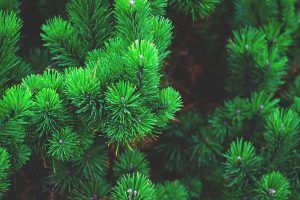
Evergreen trees have leaves all year round despite the changing seasons. Although some types of evergreen trees shed their leaves, it is not an annual or seasonal thing. It is usually due to an unexpected environmental event.
Most evergreen trees are also conifers (for example, cypresses). Conifers have needles and cones instead of flat, delicate leaves. However, there is a small handful of conifers that are deciduous.
But the question that then arises is «Why is it important to know the different types of trees?»
If you are thinking of landscaping any space, it is important to know what the trees will look like during the different seasons.
Since trees are what ultimately add beauty and color to a garden, it is important to plant a mix of deciduous and evergreen trees. Aside from aesthetics, having properly placed trees lowers the costs of cooling and heating a home.
Otherwise, it’s worth learning about the different types of trees just to get to know our slow and silent neighbors better.
The art of being able to identify different types of trees and plants is a dying skill, but it’s time to bring it back! Being prepared with this kind of information allows one to feel prepared when taking walks in the woods, and fosters a deeper curiosity about the things we see every day.
Types of Deciduous Trees
The apple tree (Malus domestica)
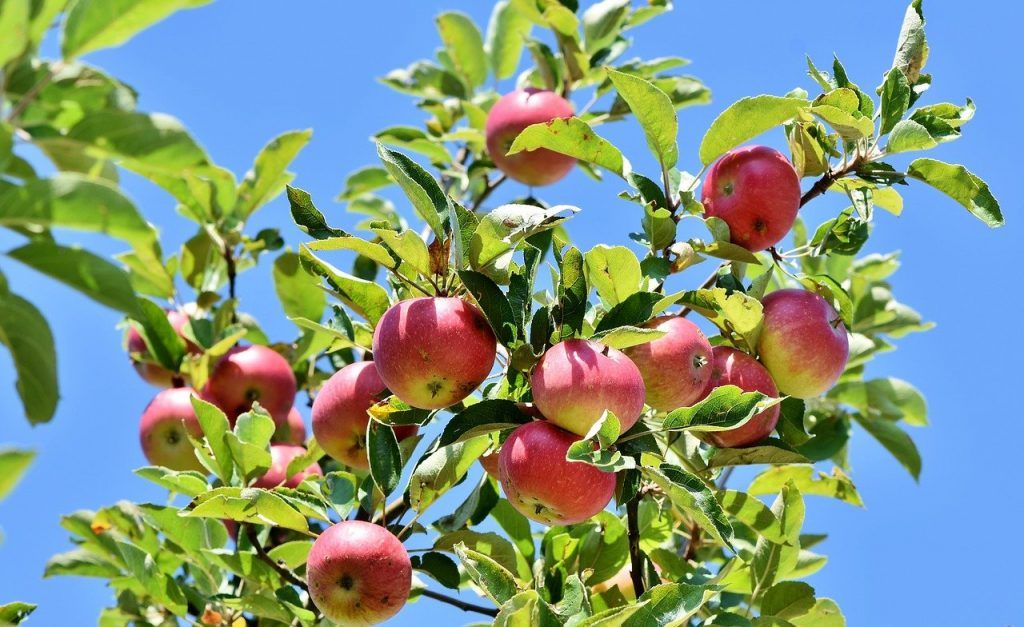
What better place to start this journey than the apple tree.
El manzano representa muchas cosas. Estos árboles se han convertido en una parte integral de las prácticas agrícolas en todo el planeta. Los manzanos son de hoja caduca y prefieren crecer en suelos húmedos, ricos y bien drenados, lo que es común en los árboles frutales.
Los manzanos son más bien bajos y sólo alcanzan entre 2 y 5 metros de altura. Son conocidos por tener unas preciosas flores blancas/rosadas que aparecen al mismo tiempo que el follaje durante la primavera. Las hojas del manzano se disponen alternativamente en una ramita y son de un color verde muy oscuro.
Los manzanos se cultivan en todo el mundo. Las arboledas comerciales existen desde hace siglos, y la preciosa fruta de la manzana que producen estos árboles podría ser posiblemente una de las frutas más emblemáticas e importantes conocidas por la raza humana.
Sirven para hacer todo tipo de postres, mermeladas, mantequillas, y son un nutritivo tentempié por sí solas.
Para saber más:
- 11 Tipos y Variedades de Manzanas más Famosas y Deliciosas
- Cómo Abonar Manzano: [Fechas y Formas de Hacerlo]
- Cómo Podar un Manzano: [Guía Completa]
- Enfermedades y Plagas del Manzano: [Identificación y Tratamiento]
- Esquejes de Manzano: [Injertos, Época, Enraizamiento y Siembra]
- Podar Manzanos: [Importancia, Época, Herramientas, Consideraciones y Pasos]
- Riego del Manzano: [Necesidades, Frecuencia y Procedimiento]
El peral (Pyrus Communis)
Siguiendo con los árboles frutales, presentamos el peral. Los perales prefieren las temperaturas frías para conseguir su especial dulzura, y son originarios de las regiones templadas de Asia, el norte de África y Europa. Existen más de 3000 variedades de peral.
Estos árboles son de hoja caduca de tamaño medio y alcanzan entre 10 y 17 metros de altura. Tienen hojas sencillas dispuestas alternativamente en un tallo y son de color verde intenso con un brillo intenso. También son conocidos por sus hermosas flores blancas.
Los perales que se cosechan comercialmente se utilizan para producir fruta, zumos, mermeladas y muchos otros artículos deliciosos. Lo que quizá no sabías es que la madera de peral también se utiliza para fabricar instrumentos de viento y muebles personalizados.
El melocotonero (Prunus Persica)
Los melocotones son originarios del noroeste de China, y desde entonces se cultivan en todo el mundo. Su nombre científico, persica, proviene del cultivo muy popular del melocotonero en Persia.
Peach trees are members of the same family as almond, plum, apricot, and cherry, which is the Rosaceae family. They are only about 7 meters tall, with long green lanceolate leaves. They develop beautiful pink flowers and are of course best known for their delicious stone fruit, the peach.
Peach trees prefer to grow in dry, continental locations, or in temperate climates. Like the pear tree, the peach tree also needs cold to reach the right ripeness and sweetness. Subtropical and tropical regions do not have these ideal natural requirements, so it will not grow in warmer places (except at high altitudes).
To know more:
- How to Fertilize Peach Tree: [Components and Needs]
- Diseases and Pests of Peach Tree [Identify and Treat Them]
- Peach Tree Pruning: How and When to do it? [Complete Guide]
- Peach Tree Leprosy: How to Identify It? How to fight it?
- Pests and Diseases of the Peach Tree: [Detection, Causes and Solutions]
The banyan tree (Ficus Benghalensis)
The banyan is both a deciduous and evergreen tree. When autumn arrives, the leaves do not change color but simply fall off. The banyan belongs to the fig family and bears siconus-shaped fruit (it is an enlarged, stoneless fruit with multiple ovaries inside).
Native to tropical and subtropical climates, the banyan tree is commonly found in places like Pakistan, Nepal, India, Sri Lanka, China, Taiwan, Central America, South America, and also in some tropical locations in the United States.
The banyan tree begins its life as an epiphyte. This means that the seed germinates and thrives in the crack of another tree or plant. Seeds that fall on the forest floor are often eaten before they can grow into a tree.
Over time, the banyan will wipe out the host tree, killing it entirely. This is why the banyan tree has received the nickname «strangler fig».
This amazing type of tree has prop roots, which means they grow in shallow, boggy soil, but cover a larger area. This is how that huge trunk can be properly supported. Banyan leaves are huge, thick, and leathery in texture.
The locals even use the leaves of this tree as plates!
The common fig tree (Ficus Carica)
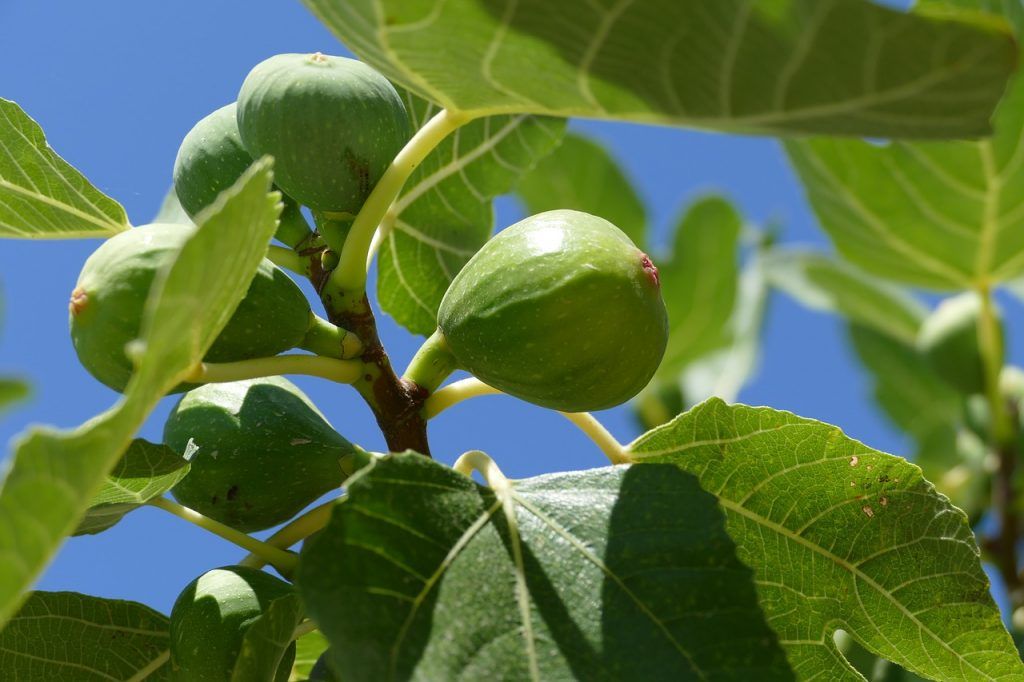
The common fig tree is a species of flowering plant native to the Mediterranean and western Asia.
It is part of the mulberry family and has also become naturalized in North America. They prefer to grow in deep, moist soil, although they have been known to grow in dry, rocky places as well.
They are medium-sized (and sometimes even large) trees, sometimes called shrubs, and grow to between 7 and 10 meters tall. They have highly scented waxy leaves, as well as attractive flowers. They have a smooth white rind and are of course best known for their delicious, fleshy fruits.
The common fig tree has been cultivated since ancient times, and there is evidence that this tree has been grown in wild, dry, sunny places for thousands of years. Today, the common fig tree is grown throughout the world for its delicious fruit.
To know more:
- 8 Types and Varieties of Most Famous Fig Trees
- Prune Fig Trees: [Importance, Season, Tools, Considerations and Steps]
- Irrigation of Fig Trees: [Needs, Frequency and Procedure]
The Black Ash (Fraxinus Nigra)
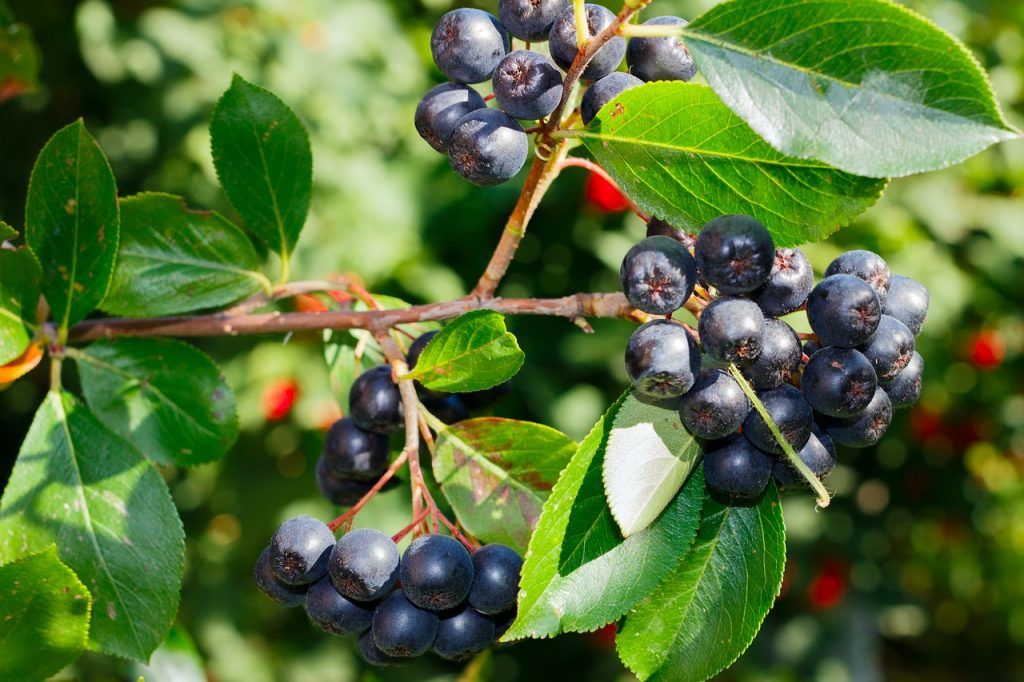
Black ash is another deciduous variety that commonly grows in swamps or other waterlogged soils. They are native throughout eastern Canada and northeastern America, in provinces and states such as Manitoba, Newfoundland, Virginia, and Illinois.
The black ash can grow up to 20 feet tall, with a trunk about 24 inches wide. The bark of this tree is dark grey, with a corky texture, which tends to crack as it ages. Its leaves are pinnately compound, and in winter they sport beautiful dark brown velvety buds.
The fruit of the black ash is of the samara variety, that is, a winged pod. Their appearance is quite dazzling when they fall to earth.
Unfortunately, the black ash is on the verge of extinction due to an infestation of the invasive species: the emerald ash borer. This nasty little bug has already managed to kill 7.5 billion ash trees, and there will probably be no more by the end of the decade.
This is especially detrimental to frog species that also live in shared areas. Black ash leaves fall into the ponds where the tadpoles live, which are their main food source. Other types of leaves are too rich in tannins, which are indigestible for frogs.
So if there are no more black ash trees, the frog population is also directly threatened.
Black ash wood is used by humans in the manufacture of electric guitars and basses. Apparently, this wood has excellent resonance qualities. In Native American cultures, black ash is an excellent choice for basketry, as the wood has no connecting fibers to hold the growth rings together.
The white ash (Fraxinus Americana)
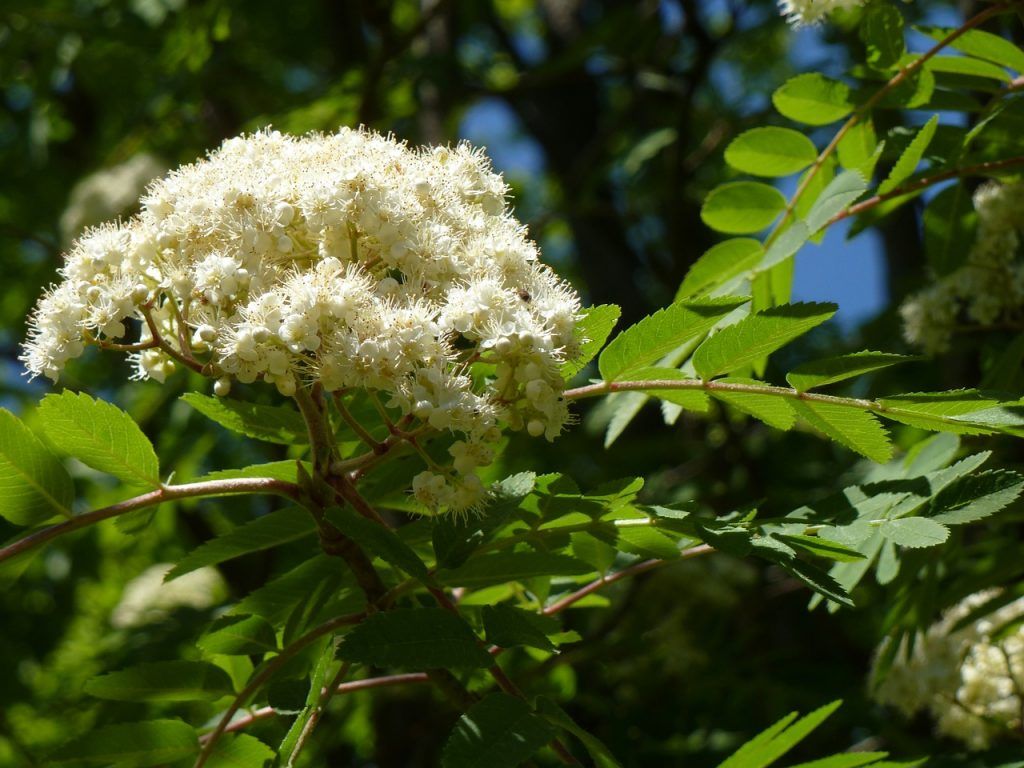
White ash trees are very similar to their brother, the black ash.
One of the few differences between the two is where they grow and the color of their leaves. White ash prefers to grow in mesophytic hardwood forests (not too hot and humid, not too cold and dry) around sugar maples.
White ash can be found throughout North America, from Nova Scotia, Canada, to Minnesota, Florida, Wyoming, and Colorado.
The white ash tree gets its name from the glaucous underside of its leaves. This is a naturally occurring gray/blue metallic color that can also be found on certain types of beetles and bugs. White ash leaves turn a vivid red and yellow in fall, with beautiful compound leaves.
White ash suffers from the same threat as black ash, the emerald ash borer. Although white ash appears to be slightly more resistant to this invasive species than its siblings, white ash is also on the endangered species list.
Due to its extremely dense, straight-grained wood, the white ash is one of the most widely cultivated trees in North America. Its wood is used in many areas, from the manufacture of baseball bats, through furniture, to floors.
The neem tree (Azadirachta Indica)
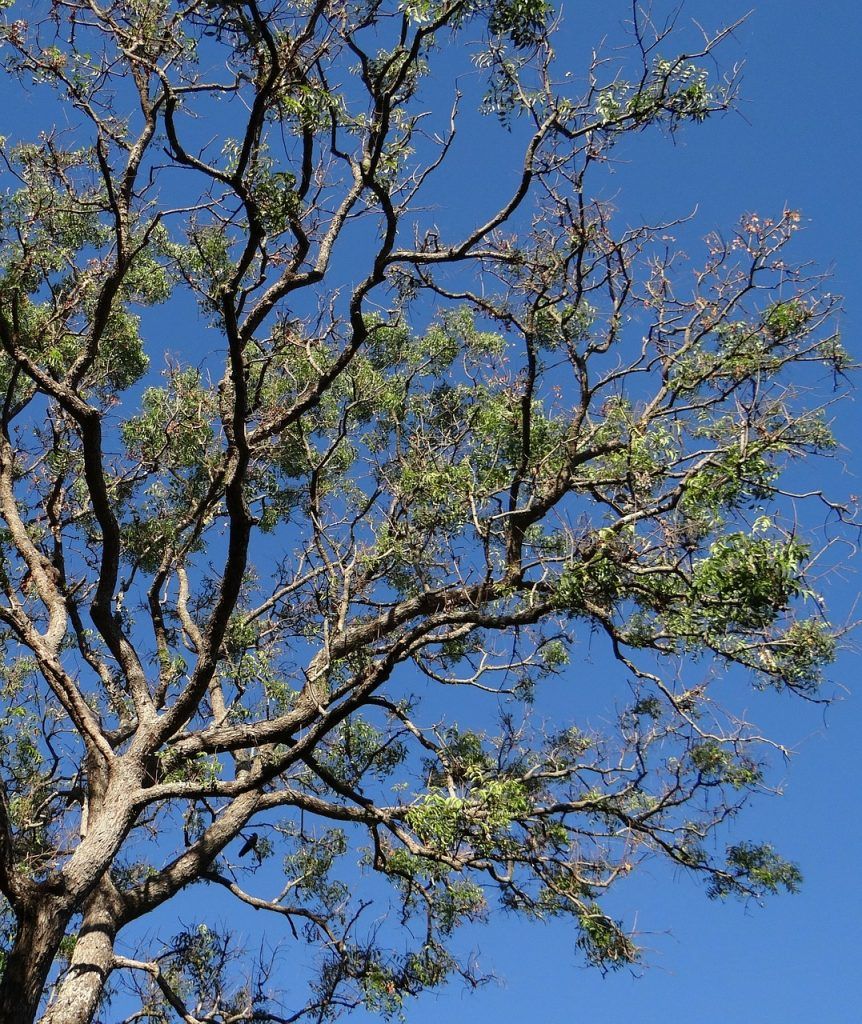
Neem is both a deciduous and evergreen type of tree, and is often referred to as a neem tree or Indian lilac. It belongs to the meliaceae family, or mahogany. It is considered evergreen, although in case of severe drought there is a possibility that it will lose its leaves.
The neem tree is usually found in tropical and semi-tropical regions and is known for its resistance to drought. It prefers an annual rainfall of about 800 ml, with a temperature that hovers around 80 degrees Fahrenheit and never falls below 39.
The places that meet all these conditions are Iran, India, Laos, Cambodia, Bengal, Thailand, Myanmar and Vietnam.
The neem tree grows incredibly fast, and can reach an impressive 40 meters in its lifetime. Its branches extend in width and height, and at the ends of the branches are dark green pinnate leaflets. In spring it will explode with bisexual white flowers, with each branch sprouting a whopping 300 blossoms per season.
This tree is used for its shade, as it is one of the only trees that can grow in these harsh regions.
They are often found around public spaces such as temples and schools. Actually, the neem tree was labeled a weed, and it is capable of spreading with overwhelming speed. For this reason, it is illegal to transport any neem seed or plant because of the risk of it becoming invasive in a foreign region.
Trembling Aspen (Populus Grandidentata)
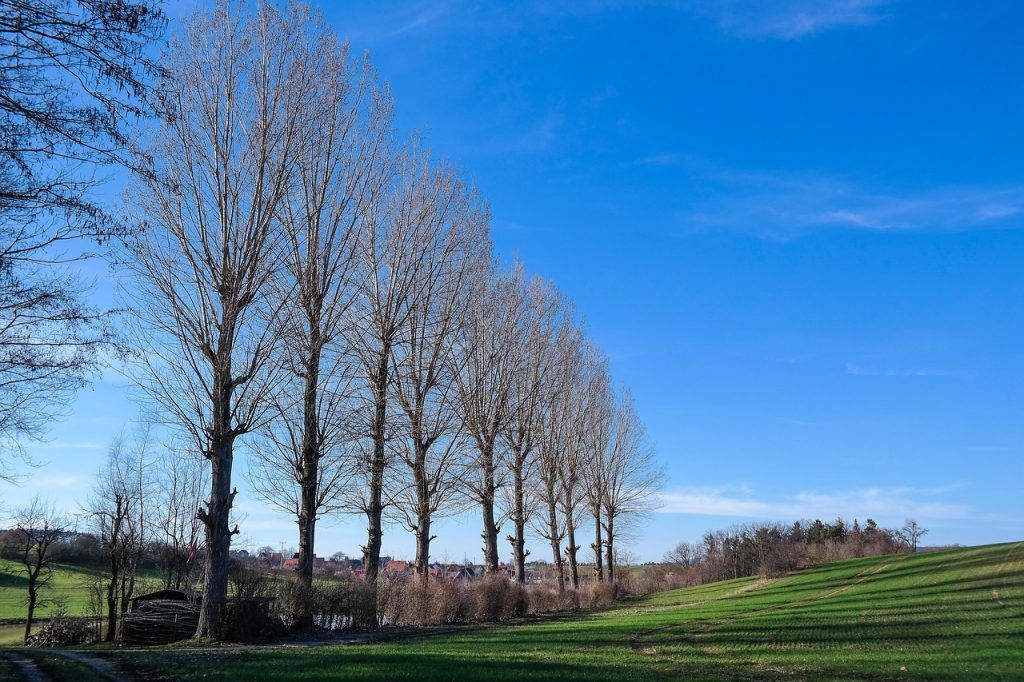
Also known as big-toothed aspen, cottonwood, or Canadian cottonwood, this slender tree is native to eastern North America. It is a deciduous tree with strange leaves, which is where its scientific name comes from. Populus grandidentata is Latin for sharp teeth, basically.
Aspen can adapt to a wide variety of soil types. It abounds in silty sands, but is also able to thrive in alpine and rocky places. They prefer to exist in well-aerated soil, but are definitely not shade tolerant.
Seed production begins around age 10 for the greattooth aspen, and each year the tree will release about a million seeds. Another form of reproduction of this tree is through suckers.
If a poplar tree dies, the suckers grow from the roots and end up becoming small clones of their parent tree. Amazing, right?
These trees are short-lived and fast-lived, but they provide much-needed shade and food for their animal neighbors. Humans use aspen wood in the form of pallets, wooden houses, chopsticks, and ladders. This is because its wood is straight grained with a very fine texture.
The tree has thick leaves that tremble and rattle in the wind, with thin, smooth, olive-green bark that turns white over time. At maturity, the bark will begin to fade to gray and become thick and riddled with strange grooves.
The mahogany tree (Swietenia Mahagoni)
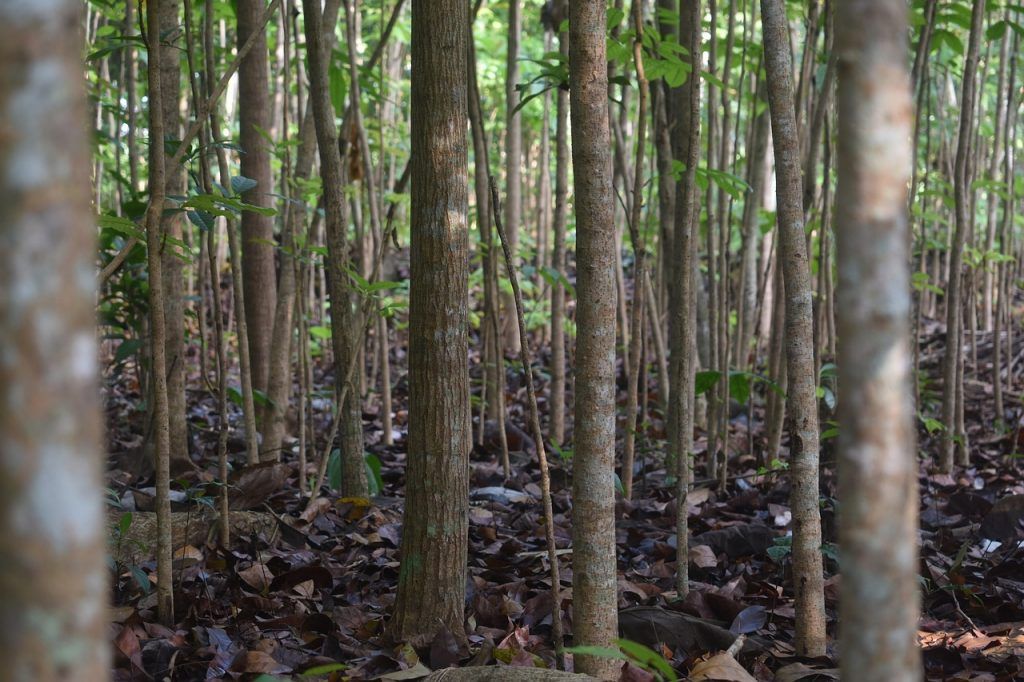
This variety of mahogany goes by many names: American mahogany, Cuban mahogany (this will make sense later), small-leaf mahogany, and West Indian mahogany. This semi-deciduous tree loses a portion of its leaves in the cooler seasons, and the new growth begins life a lovely reddish-pink color.
Hence it is semi-deciduous and semi-green.
These types of mahogany trees are native to South Florida and the Caribbean islands of Cuba, Jamaica, the Bahamas, and the Dominican Republic. As you may have guessed, this tree prefers to live in tropical climates with ample sunlight and ample humidity.
Está considerado como un árbol de tamaño medio, que crece hasta una altura de 25 metros con hojas pinnadas de mayor tamaño. Como ya se ha mencionado, cuando las hojas brotan por primera vez son de color rojo sangre, y rápidamente cambian a un verde oscuro. Los árboles de caoba producen frutos en madera, vainas aladas que contienen sus semillas.
Todos esos apodos que ha recibido la swietenia mahagoni se deben a la forma en que se ha cultivado a lo largo de los años.
La primera vez que se tiene constancia de su uso fue en 1514 para construir la iglesia más antigua de las Indias Occidentales, y desde entonces la madera de caoba ha sido un elemento básico en la fabricación de muebles finos y en las estancias reales.
La caoba también es un material muy codiciado para la fabricación de instrumentos de alta gama, como mandolinas, marimbas y guitarras. Sin embargo, debido a la sobreexplotación irresponsable, gran parte de la caoba disponible hoy en día proviene de una especie diferente, y es de menor calidad.
El tilo (Tilia Americana)
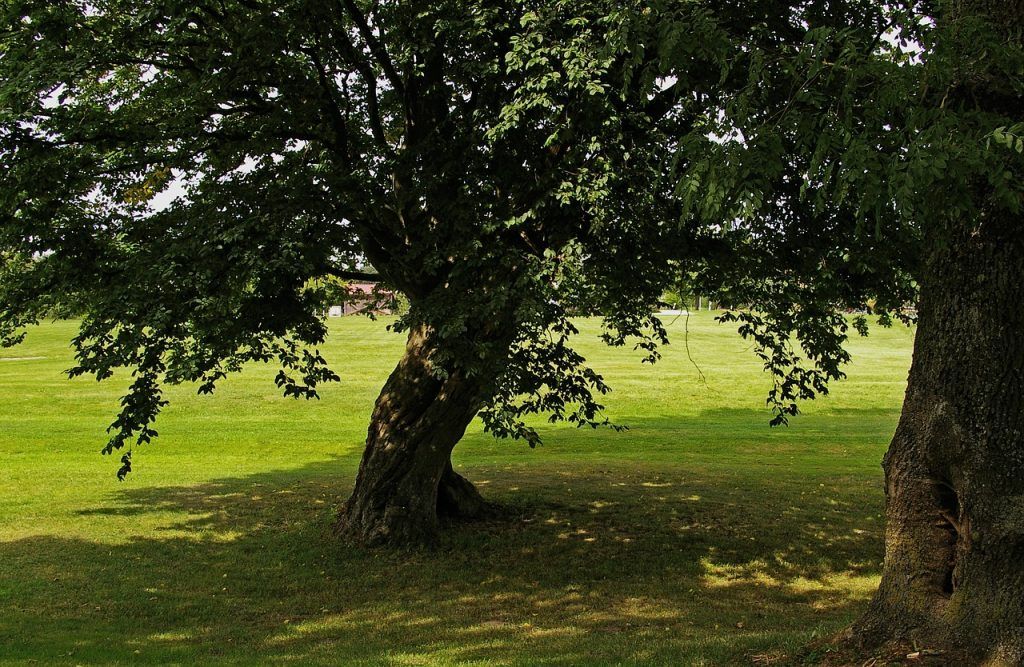
La especie de este árbol procede de la familia de las malváceas, y el tilo es el único representante de su género en el hemisferio occidental. También conocido como tilo americano, es un gran árbol caducifolio que crece más rápido que cualquier otro árbol de frondosas norteamericano. Y no sólo eso, este monstruo tiene una esperanza de vida de 200 años.
Linden grows in mesic soils with a fairly high pH. A mesic soil is a soil that is neither too wet nor too dry and is well aerated.
This tree reaches the disconcerting figure of 37 meters in height and a trunk diameter of 1.5 meters. Its leaves are quite large, simple in shape, with alternating oval and cordate shapes (oval and heart-shaped with wide bases).
Its flowers are small, white and highly scented, and they are edible!
Basswood has a very pale colored wood, without knots, but it does not split easily. In the past, this wood was used to make baskets, fishing nets, and ropes. It is also a popular choice of wood for making guitars.
The foliage and flowers of this tree have also been used for medicinal purposes. Linden flowers, usually dried and made into a tea, help fight illness, inflammation, headaches and muscle aches.
tipuana tree
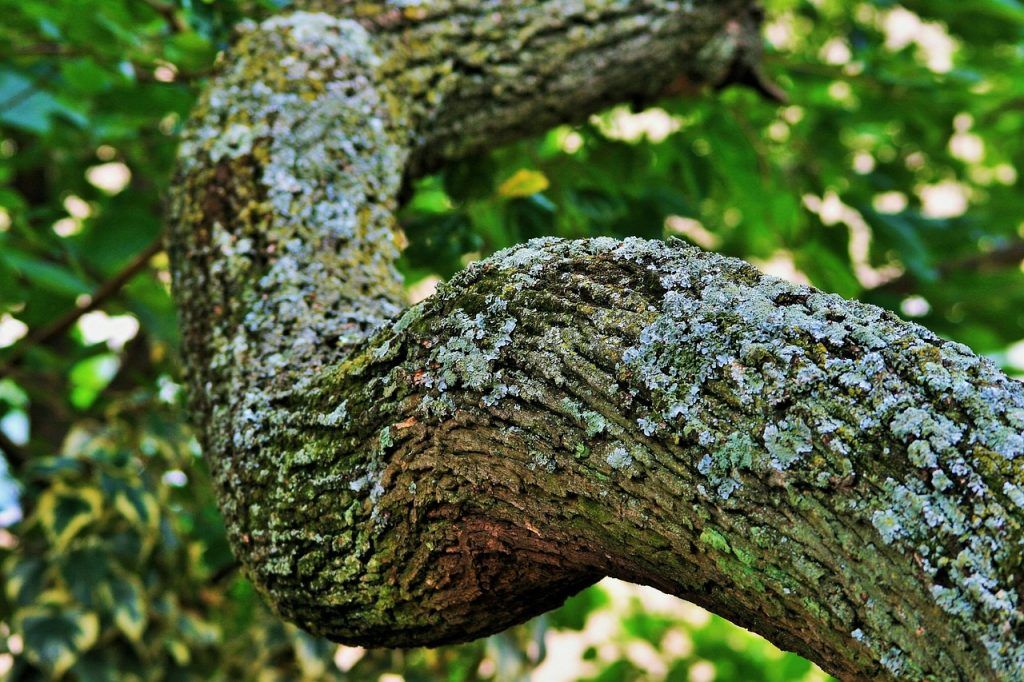

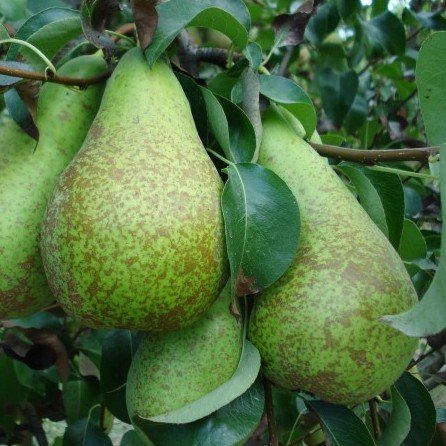

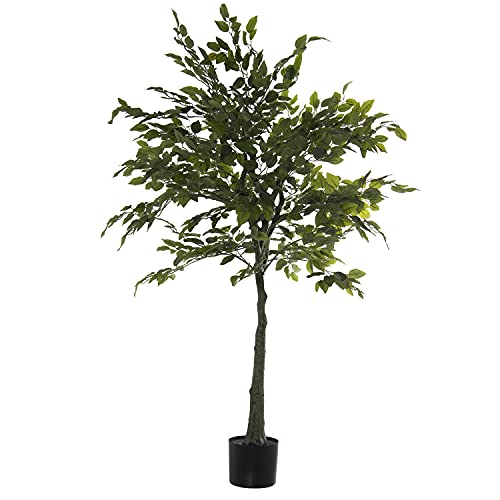
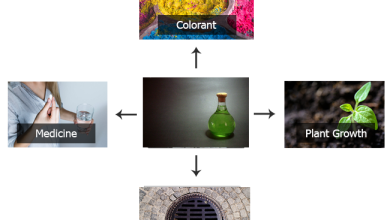
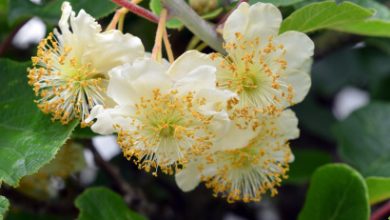
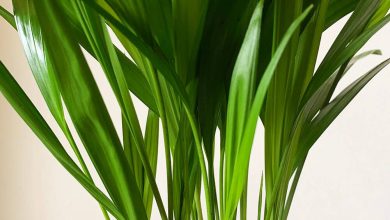
![Photo of Lavender Pests and Diseases: [Detection, Causes and Solutions]](https://www.complete-gardening.com/wp-content/uploads/2021/06/lavanda_1603497780-390x220.jpg)